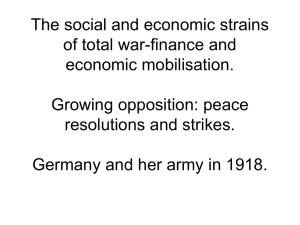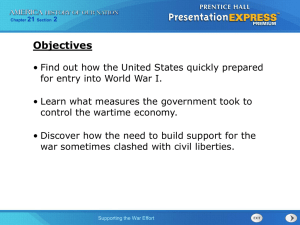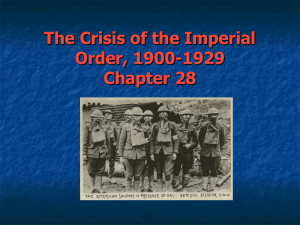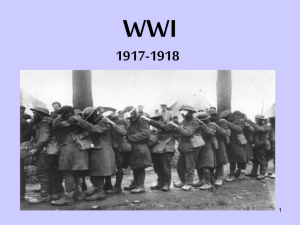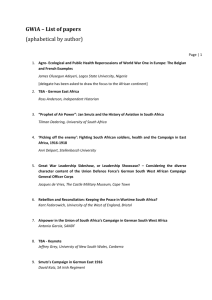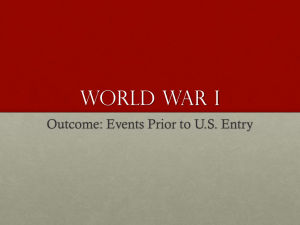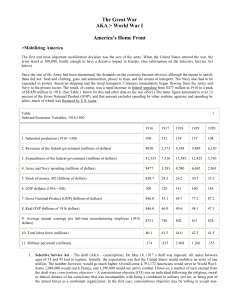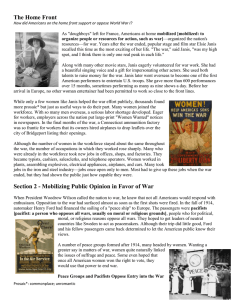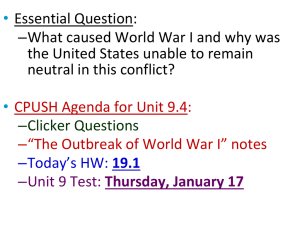Notes 10.2 - iTeach Demo Educational Content Distribution
advertisement
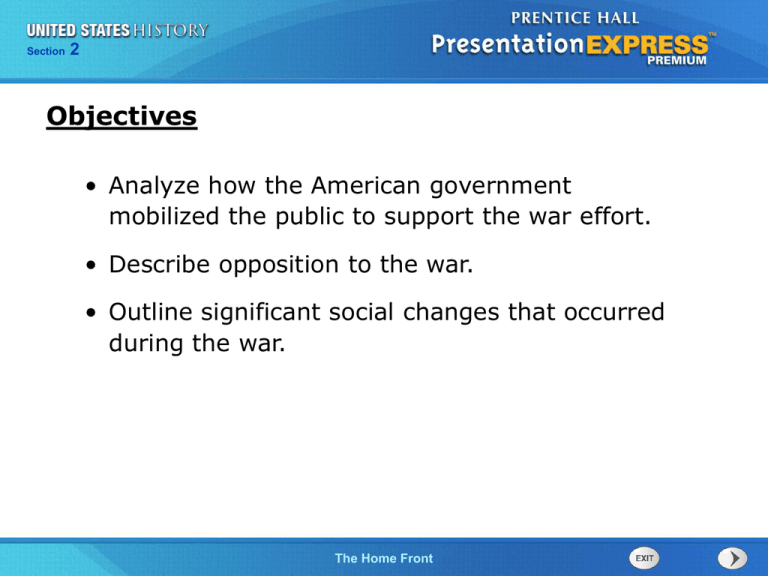
225 Section Chapter Section 1 Objectives • Analyze how the American government mobilized the public to support the war effort. • Describe opposition to the war. • Outline significant social changes that occurred during the war. The Home Front The Cold War Begins 225 Section Chapter Section 1 Terms and People • Selective Service Act – law that established a military draft in 1917 • Bernard Baruch – head of the War Industries Board, which regulated businesses related to the war effort • CPI – Committee on Public Information, which worked to convince the public that the war was just • George Creel – director of the CPI The Home Front The Cold War Begins 225 Section Chapter Section 1 Terms and People (continued) • conscientious objector – a person whose moral or religious views forbid participation in war • Espionage Act – 1917 law that gave postal authorities power to ban treasonable or seditious materials from the mail • Great Migration – the movement of more than 1.2 million African Americans from the South to northern cities between 1910 and 1920 The Home Front The Cold War Begins 225 Section Chapter Section 1 How did the war affect Americans at home? For the first time, the government played a major role in Americans’ daily lives, taking on new powers to regulate industry, draft soldiers, and shape public opinion. The war required sacrifice, but it also brought new opportunities. The Home Front The Cold War Begins 225 Section Chapter Section 1 In 1917, the United States needed to increase the size of its army. • President Wilson called for volunteers. • Congress passed the Selective Service Act. • More than 4 million U.S. soldiers were sent to Europe. The Home Front The Cold War Begins 225 Section Chapter Section 1 The federal government took control of the wartime economy. The Council of National Defense created federal agencies to oversee food production, fuel distribution, and railroads. $ Bernard Baruch headed the War Industries Board (WIB), which regulated war-related businesses. The Food Administration, led by Herbert Hoover, set prices for agricultural products. The Home Front The Cold War Begins 225 Section Chapter Section 1 The War Industries Board encouraged factories to increase output. Similarly, the Food Administration encouraged farmers to produce more food. Women entered the workforce to help the war effort. The Home Front The Cold War Begins 225 Section Chapter Section 1 The Committee on Public information (CPI) encouraged public support for the war. • Headed by George Creel, the CSI distributed millions of pamphlets and sent out thousands of press releases and speakers. • CPI materials outlined U.S. and Allied goals and stressed the enemy’s cruelty. The Home Front The Cold War Begins 225 Section Chapter Section 1 Not all Americans supported the war. The draft was controversial, and some men refused to register for it. The Home Front The Cold War Begins Conscientious objectors were supposed to be exempt from the draft. In practice, however, this exemption was widely ignored by local draft boards. 225 Section Chapter Section 1 Some women also opposed the war. Jeannette Rankin, a pacifist and the only woman in Congress, voted against the war. Jane Addams formed the Women’s Peace Party and the Women’s International League for Peace and Freedom. The Home Front The Cold War Begins 225 Section Chapter Section 1 The government passed laws to discourage dissent. • The 1917 Espionage Act gave postal authorities power to ban newspapers or other printed materials that could incite treason. • In 1918, the Sedition Act outlawed speech that went against the government or the military. • Congress enacted laws that imposed heavy fines and prison terms on anyone who interfered with the war effort. The Home Front The Cold War Begins 225 Section Chapter Section 1 Support of the Allies and anger at Germany caused a backlash against German Americans. • Some schools stopped teaching the German language. • People stopped listening to music by German composers. • They called hamburgers “liberty steaks” and Dachshunds “liberty pups.” Occasionally, hatred of the German enemy boiled over into violence against German Americans. The Home Front The Cold War Begins 225 Section Chapter Section 1 The war presented new opportunities to African Americans. • 367,000 African Americans served in the military. • In the Great Migration, more than a million African Americans moved north, hoping to escape poverty and Jim Crow laws and find better jobs. The Home Front The Cold War Begins 225 Section Chapter Section 1 Section Review QuickTake Quiz Know It, Show It Quiz The Home Front The Cold War Begins

